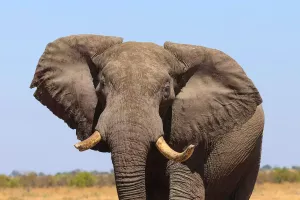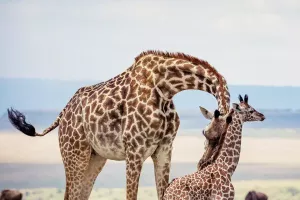The Korat cat is native to the Korat Plateau in northwestern Thailand. One of the very few cats that can be called an ancient breed, it first appeared in an ancient book called "Cat Poems", which dates back to the Ayutthaya period (1350-1767) in Thai history.
The Korat cat is named after a province in its native Thailand. In this place, it has been regarded as a messenger of luck for hundreds of years. Thai people call it "SiSawat", which means luck and wealth. Thai people often give the bride a pair of cats representing auspicious celebrations as a traditional wedding gift.
The Korat cat's coat is silver blue. It has large eyes, a green face, and a heart-shaped body that is not as lanky as other shorthair cats. The Korat cat has a curved back, which is the same as the Siamese cat. Its body is stronger and more muscular than the Siamese cat. Its legs are long or slender. The tail is long and rounded at the end.
Because they have almost no undercoat, they are poorly protected from the cold. It also sheds seasonally, but unlike other cats' coats, it does not fluff up when petted. The short-to-medium long blue hair is tightly attached to the body, fine and shiny. The "fringed" awn hair gives it a nice silvery shimmering color, which is especially noticeable on shorthair cats.
This silver "fringing" is only at its greatest effect when the Korat is two years old. The nose and lips are dark blue or lavender, as are the paws, with a tinge of brown. The coat of the perfect Korat cat is free of tan and tabby, and no white patches or spots.
The Korat cat is relatively quiet, giving people a sense of dignity and introversion. Their meows are soft and gentle, and they like to be close to people. They are highly intelligent and can learn to pick up toys or walk on their legs with a little training. The Korat cat has a close bond with its owner, making it the perfect companion animal. They are usually active, sometimes quiet, and gentle and affectionate with their owners. This cat is sensitive and easily startled by noises and sudden petting. But it is not friendly to other cats and does not trust strangers. Therefore, it is not suitable for breeding in multi-cat households and environments with frequent strangers.
Long cherished by native people as a symbol of luck, the cat was first introduced to the United States in the 1950s. But the breed was not known to the Western world until a pair of breeding cats were sent to the United States in the mid-20th century. The Korat cat was introduced to the United States from Thailand in 1959, and was recognized by American cat lovers in 1965. The imported Korat cat was exhibited in England in the 19th century, but was not successful because it was thought to be nothing more than a Siamese cat with a blue coat.
American breeder JEAN JOHNSON started the breeding of this variety in 1959. The breed was recognized by CFA and TICA in 1966 and 1969. The breed was recognized by FIFe in 1972 as soon as it was introduced to Europe. Although the breed is well known in the United States, it is still unknown in Europe.
If you want to raise this breed, you need to understand its susceptibility to disease and manage its health accordingly. Korat cats are relatively skinny, and are prone to diseases such as gangliosidosis, urolithiasis, and pyometra.


